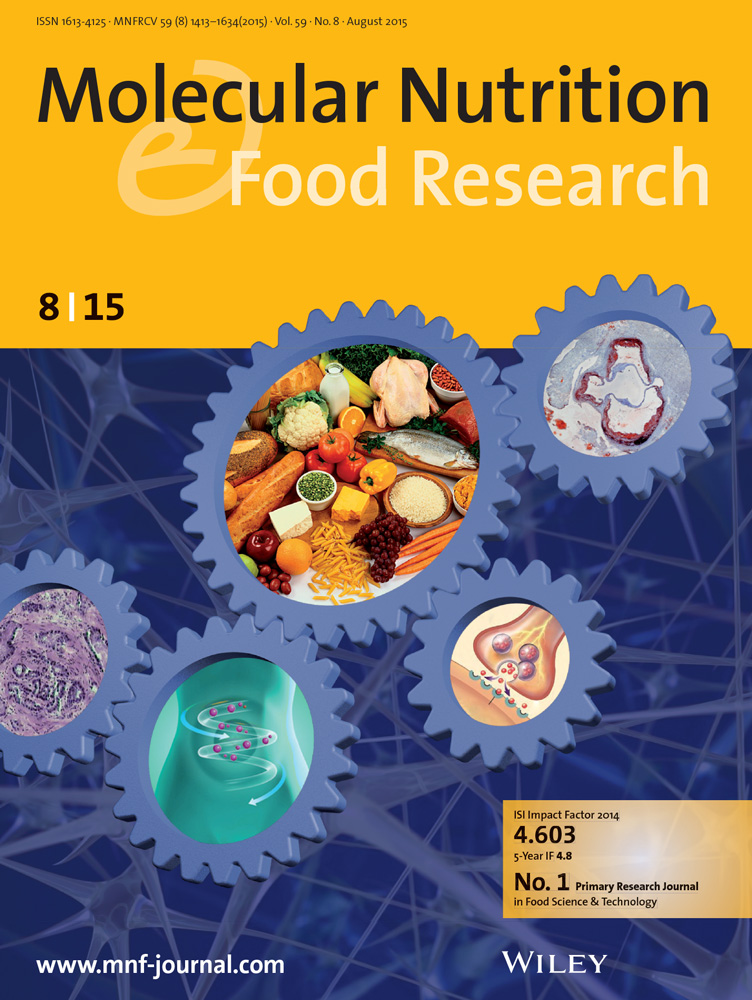从甘草鱼中提取的甘草酸:靶向JNK信号通路治疗阿尔茨海默病的新候选药物。
IF 4.2
2区 农林科学
Q1 FOOD SCIENCE & TECHNOLOGY
引用次数: 0
摘要
阿尔茨海默病(AD)已成为一个普遍的公共卫生问题。本研究旨在探讨甘草鱼的作用机制。利用网络药理学、分子对接和体外验证技术,对AD进行了研究。以基因表达为基础,构建了一个基因网络,鉴定了与a β和Tau相关的核心靶基因以及乌拉尔氏菌的有效化合物。通过贡献指数(CI)筛选,CI反映了每个基因对Aβ/Tau的相对重要性。分子对接分析表明,甘草酸(GA)与这些核心靶点紧密结合。然后,用a - β1-42诱导小胶质细胞建立AD体外模型。该模型用于评估GA对小胶质细胞凋亡、迁移和炎症的影响。RT-qPCR(实时定量聚合酶链反应)结果显示,GA降低了Tbk1 (tank结合激酶1)和Soat1(甾醇o -酰基转移酶1)的表达,同时增加了Slc2a3(溶质载体家族2成员3)的表达。此外,Western Blot结果表明,GA抑制JNK信号通路。这证明了其抗细胞凋亡和抗炎的特性。因此,GA通过其对关键信号通路和基因表达的调节,有望成为AD的潜在治疗候选药物。本研究表明,GA是uralensis Fish中的一种关键化合物,通过靶向a β/ tau相关基因(Tbk1、Soat1和Slc2a3)并抑制JNK通路来缓解AD病理。本文章由计算机程序翻译,如有差异,请以英文原文为准。
Glycyrrhizic Acid From Glycyrrhiza uralensis Fish: A Novel Therapeutic Candidate for Alzheimer's Disease Targeting the JNK Signaling Pathway.
Alzheimer's disease (AD) has emerged as a prevalent public health concern. This study aims to investigate the mechanism of Glycyrrhiza uralensis Fish. in AD through the utilization of network pharmacology, molecular docking, and in vitro validation techniques. Based on gene expression, a gene network was constructed to identify the core target genes related to Aβ and Tau, and the effective compounds of G. uralensis Fisch. were screened by contribution index (CI), which reflects the relative importance of each gene for Aβ/Tau. Molecular docking analysis revealed that glycyrrhizic acid (GA) strongly binds to these core targets. Next, an in vitro model of AD was established by inducing microglia with Aβ1-42. This model was used to assess the effects of GA on microglial apoptosis, migration, and inflammation. RT-qPCR (real time quantitative polymerase chain reaction) results indicated that GA lowered the expression of Tbk1 (TANK-binding kinase 1) and Soat1 (sterol O-acyltransferase 1) while simultaneously increasing the expression of Slc2a3 (solute carrier family 2 member 3). Additionally, Western Blot results suggested that GA inhibited the JNK signaling pathway. This demonstrates its anti-apoptotic and anti-inflammatory properties. Therefore, GA, through its modulation of key signaling pathways and gene expression, is expected to be a potential therapeutic candidate for AD. This study reveals that GA, a key compound in G. uralensis Fish, alleviates AD pathology by targeting Aβ/Tau-related genes (Tbk1, Soat1, and Slc2a3) and inhibiting the JNK pathway.
求助全文
通过发布文献求助,成功后即可免费获取论文全文。
去求助
来源期刊

Molecular Nutrition & Food Research
工程技术-食品科技
CiteScore
8.70
自引率
1.90%
发文量
250
审稿时长
1.7 months
期刊介绍:
Molecular Nutrition & Food Research is a primary research journal devoted to health, safety and all aspects of molecular nutrition such as nutritional biochemistry, nutrigenomics and metabolomics aiming to link the information arising from related disciplines:
Bioactivity: Nutritional and medical effects of food constituents including bioavailability and kinetics.
Immunology: Understanding the interactions of food and the immune system.
Microbiology: Food spoilage, food pathogens, chemical and physical approaches of fermented foods and novel microbial processes.
Chemistry: Isolation and analysis of bioactive food ingredients while considering environmental aspects.
 求助内容:
求助内容: 应助结果提醒方式:
应助结果提醒方式:


